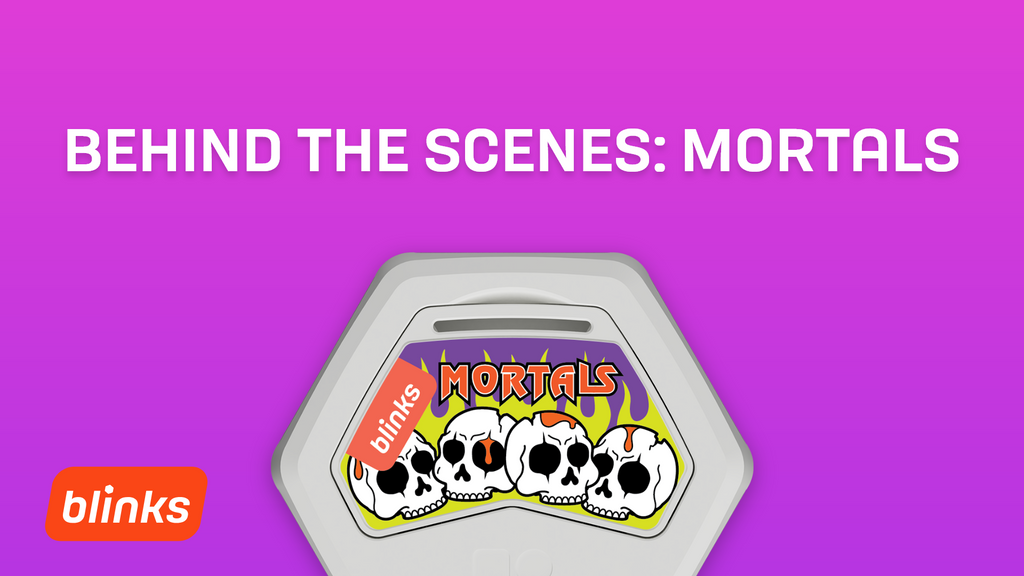Mortals is one of the first Blinks Games. Designed by Nick Bentley and Jon Bobrow back when Blinks were still called AutomaTiles. The following is a reflection on Mortals (First called Live Free or Die) and its development written by Nick Bentley in 2018 + updated with more recent developments.
The key idea behind the game is that the pieces age and die, and the last player with a living piece wins.

Basic Rules
- the game is for two players (for now).
- one player owns 3 purple tiles; the other owns 3 green tiles.
- at the start each players’ 3 tiles are arranged in a triangular clump, and the clumps are put together to start the game.
- the players take turns
- on your turn, you must move any tile (of either color), or any group of tiles (of any combination of colors). This means you detach them from the group and put them back together with the group in any arrangement. The tiles you move must be detachable without lifting them from the table (for example you can’t move a tile surrounded by 5-6 other tiles).
- the tiles’ lights pulse gently, and the rate of the pulse indicates how close they are to death (they panic as death approaches). When a piece dies it becomes a zombie (pulsing red).
- the rate at which each piece ages depends on who its neighbors are. A piece with more enemies than friends around it will age quickly. A piece with equal numbers of enemies and friends will age at a medium rate, and a piece with more friends than enemies around it will age slowly.
- when you move a single piece, it gains life (20% of its starting life - exercise is good!) Note: when you move more than one piece as a group, none gain life.
- the last player with a living tile on the table wins.
Each game is intense and lasts just a minute or two (though we can make it as long as we want by making the tiles age more slowly).
Here’s an example from a early test session at Babycastles in New York City:
Origin Story
Mortals was inspired by one of the weirdest games in the history of board games: Tamsk

In Tamsk:
- each piece is a sand-timer, and each player owns several.
- When a sand-timer runs out, the player who owns it can no longer use it.
- When you move a sand-timer, you flip it, thus delaying its death.
There are more rules that make it somewhat complicated (having to do with depositing rings around the board to restrict your opponent’s movement), but the goal is the same: kill your opponent’s pieces by making them run out of time, before yours do.
Tamsk didn’t work for a number of reasons: it was expensive, the sand-timers could be glitchy, and it was maybe too complicated for the time-pressure it put players under.
That’s no knock against the designer (Kris Burm, one of the greatest board game designers ever for my money). It’s just hard to create a traditional board game with time as an intrinsic strategic variable.
But for Blinks it’s easier, so we thought we should try to design a game like that.
Because the tiles can communicate with one another, they can be made to do cool things with time that you could never do with a traditional board game, for example have tiles suck the life out of each other like little retributive vampires (which indeed they do in this game).

Illustrator, Denis Bauser contributed to the distinctive art and Justin Ha to refining the game into what it is today. The combination of real-time countdown, action, and strategic placement works really well here and we are proud to have this as one of the oldest Blinks games.
Mortals was published as part of the Original Blinks Core Set and now available in the Blinks Ultimate Action Pack

